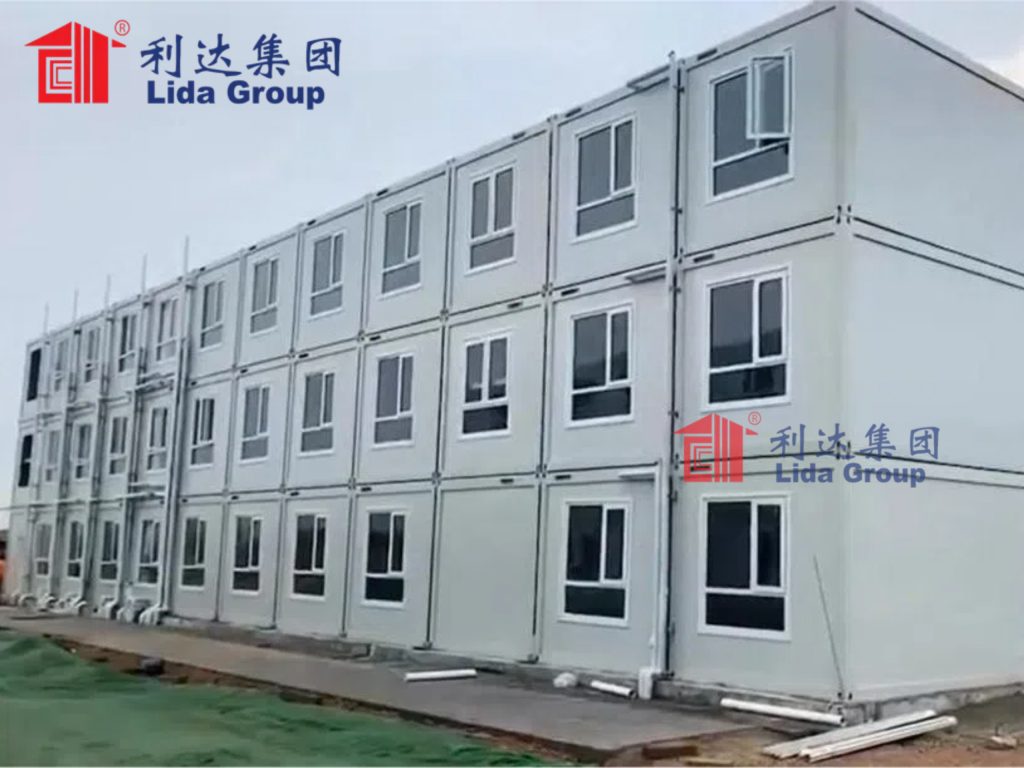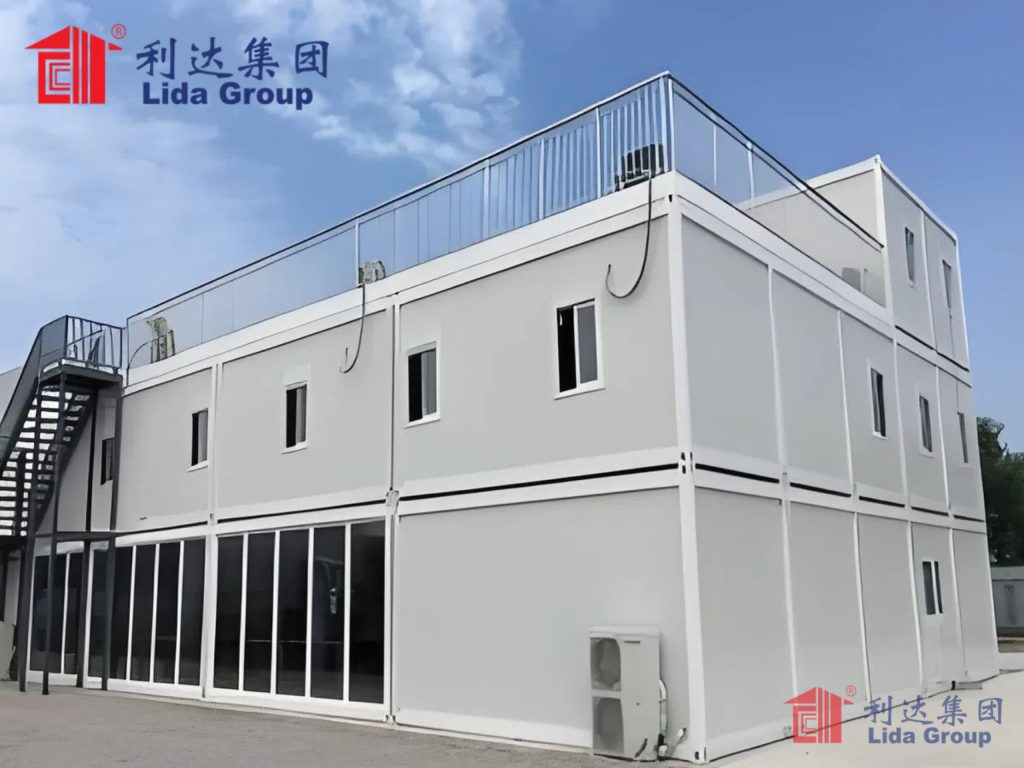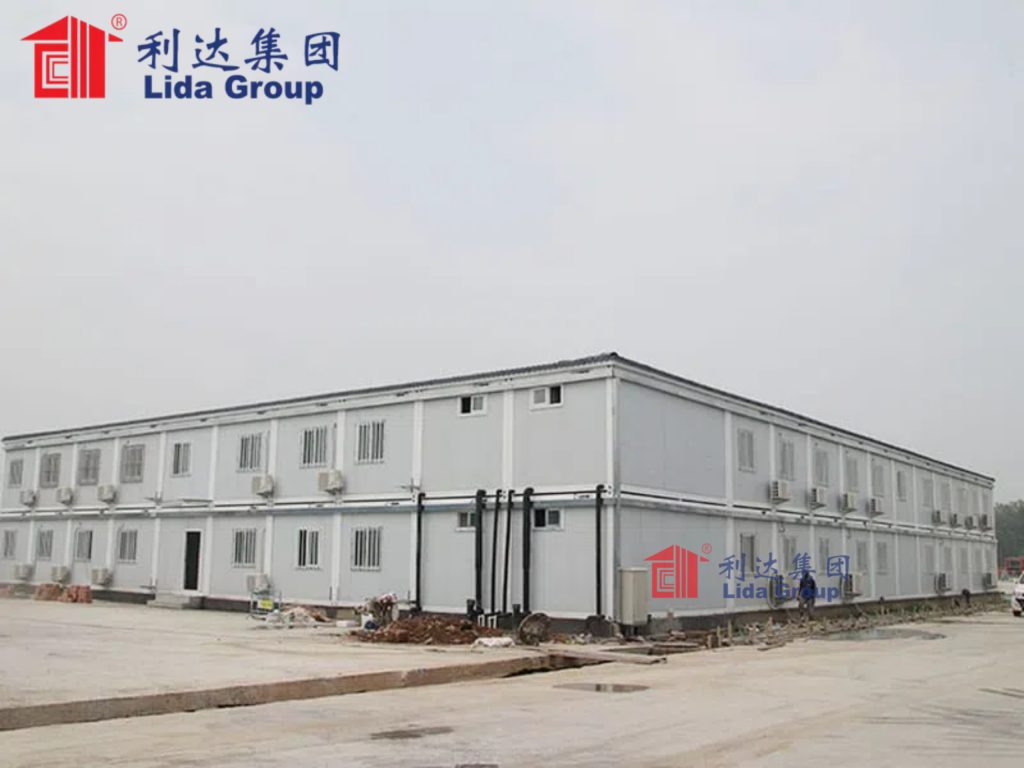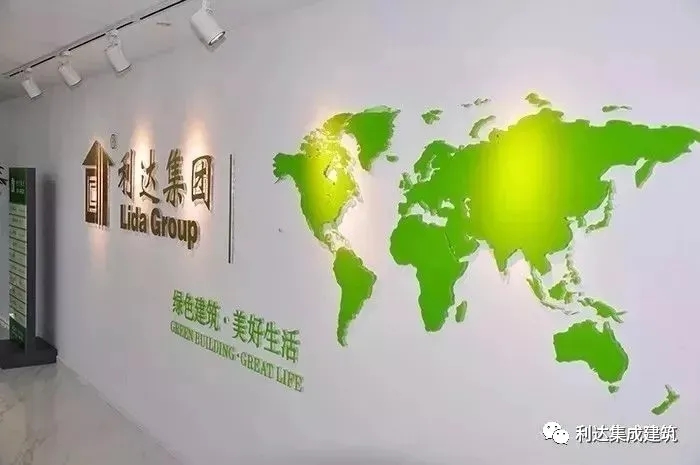As globally displaced populations rise amid conflicts and climate impacts, humanitarian organizations seek scalable housing solutions. Yet traditional construction lags capacity to shelter millions urgently in need. To assess productivity enhancements enabling mass production, researchers analyzed Lida Group’s optimized prefabrication approaches for portable housing components compatible with rapidly deployable buildings assembled from refitted cargo containers.
Lida specializes in modular construction utilizing standard shipping containers as the structural shell substrate. Through repeat deployment-disassembly cycles, containers gain new purpose beyond transport as the foundation for semi-permanent refugee/community buildings. Researchers observed Lida’s manufacturing facilities to quantify productivity gains from innovative off-site prefabrication techniques.

At Nanjing, interior wall, roof and systems modules are pre-assembled on an automated production line. Standardized steel framing is cut-to-length then fastened together off-site, allowing multiple sub-assemblies simultaneous construction. Integrated electrical, plumbing and vapor barriers install through concealed internal cavities within framed panels. Completed modules stack efficiently for containerized delivery to deployment sites worldwide.
Researchers quantified time savings through automated cutting/fastening versus traditional sequential on-site methods prone to delays. Module sub-assemblies completed at a rate 30% faster than the theoretical maximum possible through manual stick-built techniques at any scale. Cost modelling estimated a 25% reduction in direct labor hours versus on-site erection, critical for achieving mass scale.

Modular designs optimize space utilization within restrictive container footprints. Standardized inter-modular connections facilitate rapid scaling from individual units to entire multi-building complexes. Researchers calculated utilizing 96% of floor space compared to typical 85% for non-standard prefab housing, translating 15-20% gains in housing capacity from equivalent building footprints or container allocations.
To validate field performance, researchers accompanied deployment of 100 housing units to rural disaster zones. Containers arrived flats-packed with pre-fitted modular interiors readied for swift on-site erection. Installing standardized roofs, walls and internal systems took one-third less time versus theoretical optimized manual construction. Streamlined logistics and assembly mirrored savings quantified at production facilities.

Field inspections found modular prefab performed resiliently through harsh environmental testing, withstanding impacts, termite exposure and moisture ingress without functional degradation normally affecting temporary shelters. Researchers calculate housing 30-50% more families sustainably over project lifespans versus traditional single-use tent cities given reusability through modular refurbishment versus full replacement.
In summary, researchers concluded Lida Group’s optimized off-site prefabrication and modular construction techniques maximize productivity from initial design through final field deployment cycles. Automation and integrated pre-assembly at production facilities complete sub-components 30% faster than theoretical optimized manual processes. Modular inter-connectivity and standardized designs successfully house 15-20% more families within equivalent footprints. Overall calculated savings of 25-30% in direct construction labor translate to enabling mass-scale production critical for sustainably housing worldwide’s growing displaced populations through portable prefab technology. Findings support these innovations potential for revolutionizing global humanitarian shelter solutions capacity.

Related news
-
Engineers evaluate Lida Group's demountable modular construction system featuring standardized enclosed living units assembled rapidly on-site from repurposed freight modules.
2024-08-27 13:46:51
-
Mining company adopts Lida Group's redeployable accommodation complexes constructed from flats-packed standardized building cassettes fabricated from converted cargo containers.
2024-08-27 14:41:43
-
Academics commend adaptability and quick installation of shelters assembled from Lida Group's panelized building system after disasters.
2024-08-26 15:15:31
contact us
- Tel: +86-532-88966982
- Whatsapp: +86-13793209022
- E-mail: sales@lidajituan.com


